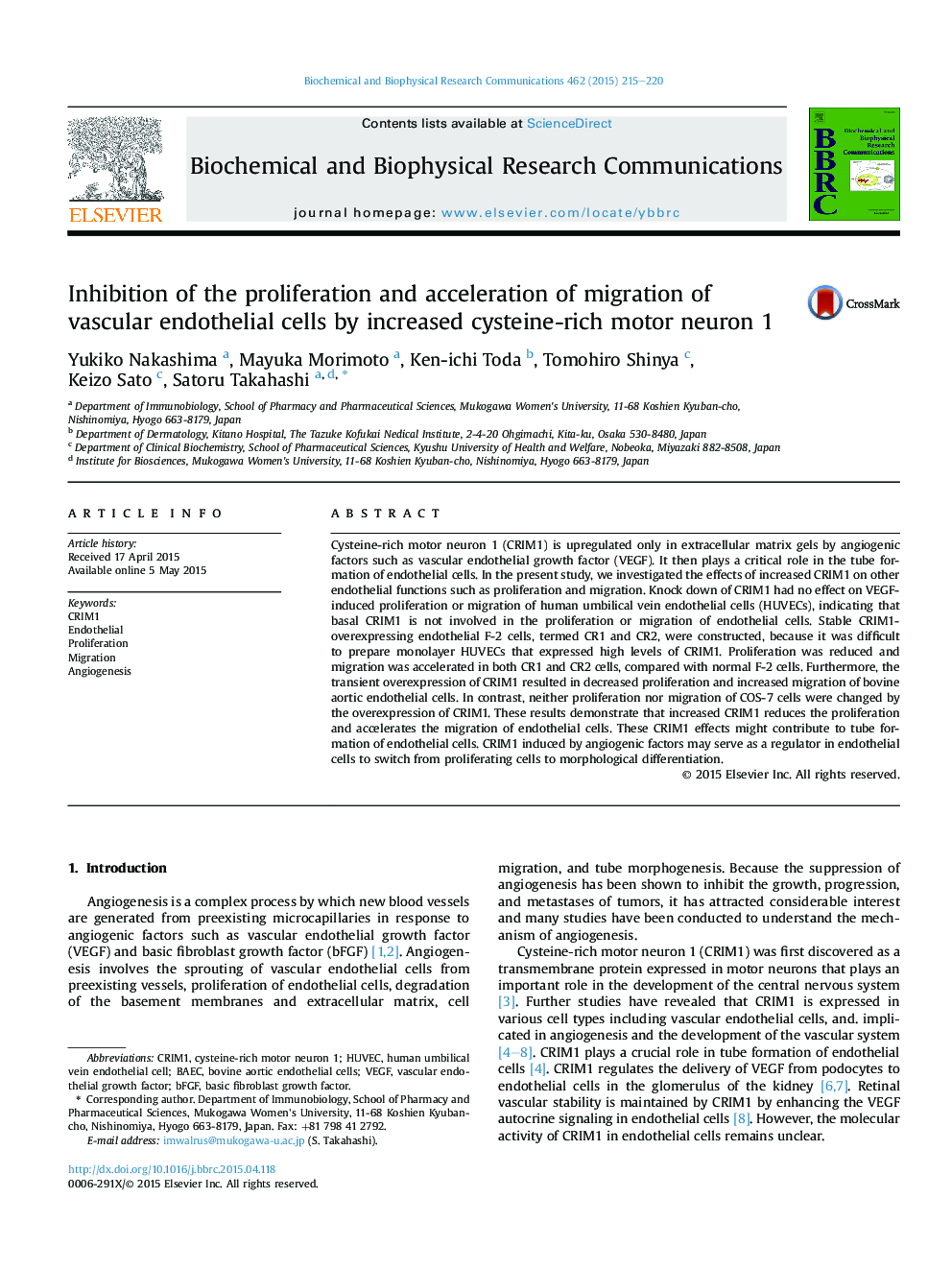| Article ID | Journal | Published Year | Pages | File Type |
|---|---|---|---|---|
| 1928037 | Biochemical and Biophysical Research Communications | 2015 | 6 Pages |
•CRIM1 was upregulated only in tubular endothelial cells, but not in monolayers.•Increased CRIM1 reduced the proliferation of endothelial cells.•Increased CRIM1 accelerated the migration of endothelial cells.•Increased CRIM1 had no effect on the proliferation or migration of COS-7 cells.
Cysteine-rich motor neuron 1 (CRIM1) is upregulated only in extracellular matrix gels by angiogenic factors such as vascular endothelial growth factor (VEGF). It then plays a critical role in the tube formation of endothelial cells. In the present study, we investigated the effects of increased CRIM1 on other endothelial functions such as proliferation and migration. Knock down of CRIM1 had no effect on VEGF-induced proliferation or migration of human umbilical vein endothelial cells (HUVECs), indicating that basal CRIM1 is not involved in the proliferation or migration of endothelial cells. Stable CRIM1-overexpressing endothelial F-2 cells, termed CR1 and CR2, were constructed, because it was difficult to prepare monolayer HUVECs that expressed high levels of CRIM1. Proliferation was reduced and migration was accelerated in both CR1 and CR2 cells, compared with normal F-2 cells. Furthermore, the transient overexpression of CRIM1 resulted in decreased proliferation and increased migration of bovine aortic endothelial cells. In contrast, neither proliferation nor migration of COS-7 cells were changed by the overexpression of CRIM1. These results demonstrate that increased CRIM1 reduces the proliferation and accelerates the migration of endothelial cells. These CRIM1 effects might contribute to tube formation of endothelial cells. CRIM1 induced by angiogenic factors may serve as a regulator in endothelial cells to switch from proliferating cells to morphological differentiation.
